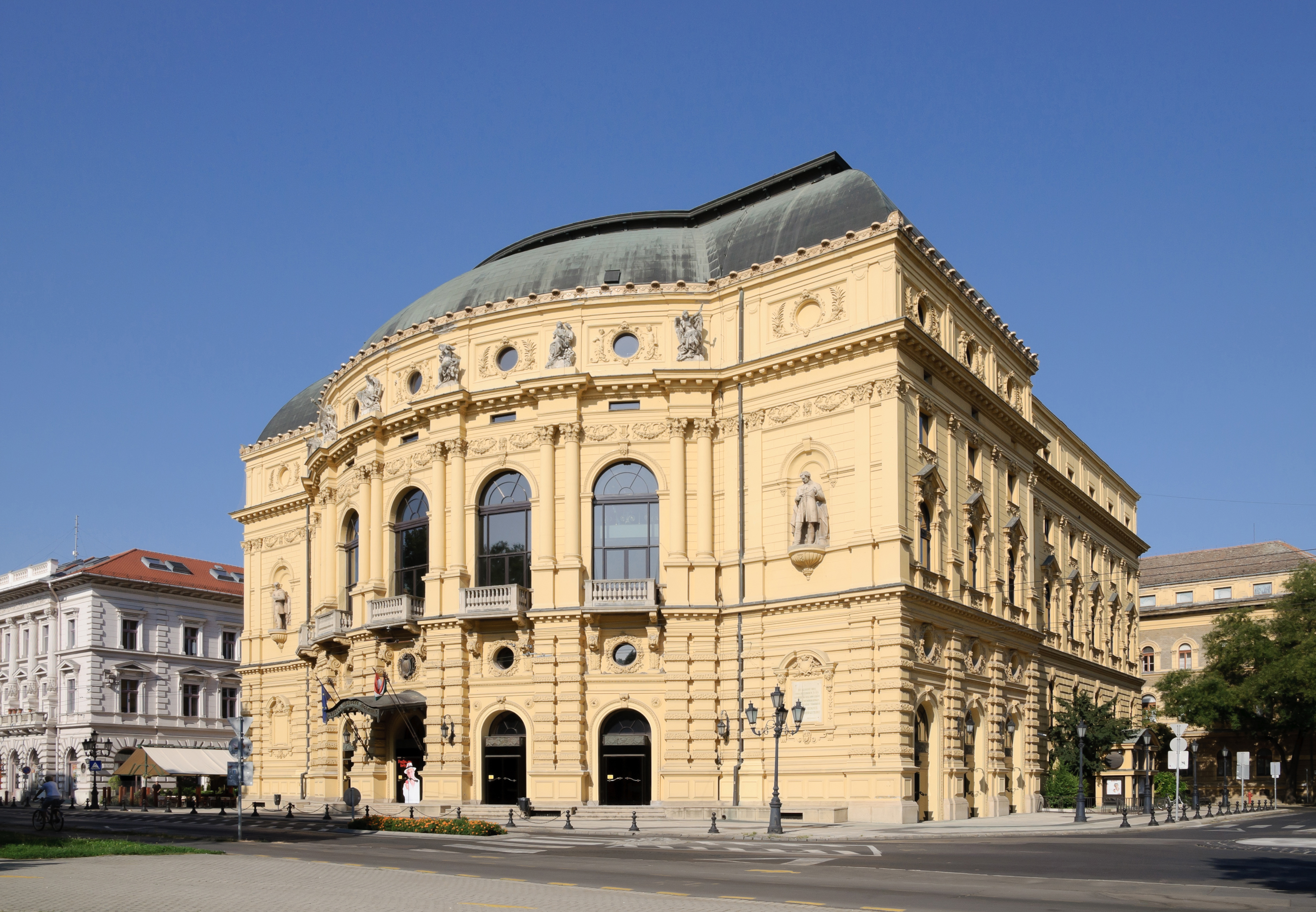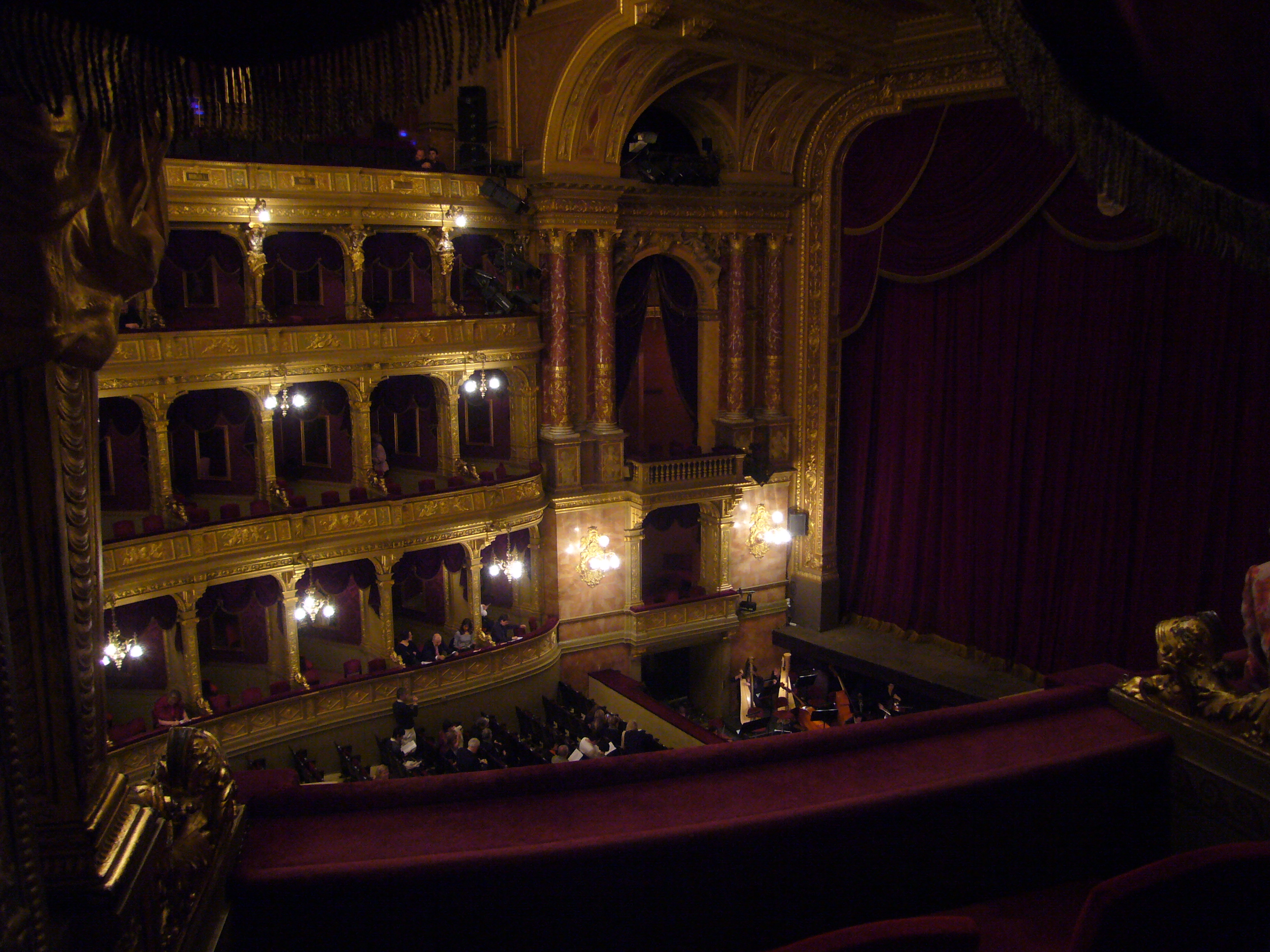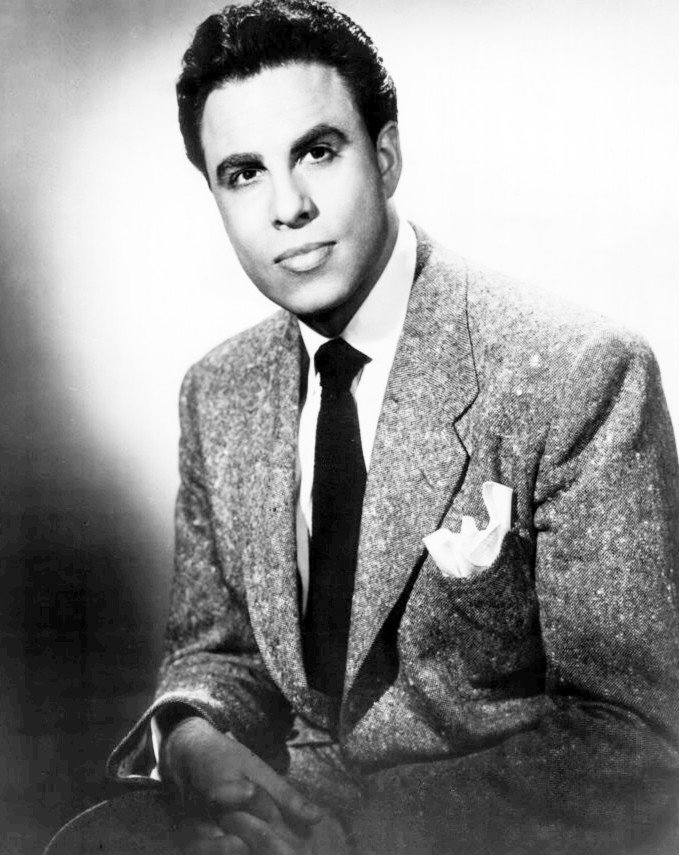|
Sly (opera)
''Sly, ovvero La leggenda del dormiente risvegliato'' (English: ''Sly, or The Legend of the Sleeper Awoken'') is an opera in three acts by Ermanno Wolf-Ferrari to an Italian libretto by Giovacchino Forzano, based on the Induction (the Prologue) to William Shakespeare's ''The Taming of the Shrew'' (the German version of libretto, ''Sly, oder Die Legende vom wiedererweckten Schläfer'', was translated by ). Unlike most of Wolf-Ferrari's other operas, this is a tragedy. ''Sly'' as verismo Many musicologists regard Wolf-Ferrari as having written only one verismo opera (''I gioielli della Madonna'', Berlin, 1911). There are reasons to disagree, and to consider ''Sly'' (La Scala, 1927) not only as being, in many ways, a verismo opera, but also as being nearly the last of its kind. And, as such, the virtual end of the noble line of Italian opera, starting, perhaps, with Cimarosa, perhaps with Paisiello, perhaps even much earlier, passing through bel canto, continuing with Verdi and hi ... [...More Info...] [...Related Items...] OR: [Wikipedia] [Google] [Baidu] |
Ermanno Wolf-Ferrari
Ermanno Wolf-Ferrari (born Ermanno Wolf) (January 12, 1876 – January 21, 1948) was an Italian composer and teacher. He is best known for his comic operas such as '' Il segreto di Susanna'' (1909). A number of his works were based on plays by Carlo Goldoni, including ''Le donne curiose'' (1903), ''I quatro rusteghi'' (1906) and ''Il campiello'' (1936). Life Ermanno Wolf-Ferrari was born in Venice in 1876, the son of German painter August Wolf and Emilia Ferrari, from Venice. He added his mother's maiden-name, Ferrari, to his surname in 1895. Although he studied piano from an early age, music was not the primary passion of his young life. As a teenager Wolf-Ferrari wanted to be a painter like his father; he studied intensively in Venice and Rome and traveled abroad to study in Munich. It was there that he decided to concentrate instead on music, taking lessons from Josef Rheinberger. He enrolled at the Munich conservatory and began taking counterpoint and composition classes. ... [...More Info...] [...Related Items...] OR: [Wikipedia] [Google] [Baidu] |
Lina Bruna Rasa
Lina Bruna Rasa (24 September 1907 – 20 September 1984) was an Italian operatic soprano. She was particularly noted for her performances in the verismo repertoire and was a favourite of Pietro Mascagni who considered her the ideal Santuzza. Bruna Rasa created the roles of Atte in Mascagni's '' Nerone'', Cecilia Sagredo in Franco Vittadini's ''La Sagredo'' and Saint Clare in Licinio Refice's 1926 oratorio, ''Trittico Francescano''. She also sang the role of Tsaritsa Militrisa in the Italian premiere of Nikolai Rimsky-Korsakov's ''The Tale of Tsar Saltan''. Biography Lina Bruna Rasa was born at Padua and began her music studies at age 14, studying with Guido Palumbo and Italiano Tabarin in her native Padua, and later in Milan with Manlio Bavagnoli. Her appearance in a 1925 concert at the Teatro La Fenice singing the "Suicidio" aria from '' La Gioconda'' created a sensation. By the end of that year, at the age of 18 she made her operatic debut singing the role of Elena in ... [...More Info...] [...Related Items...] OR: [Wikipedia] [Google] [Baidu] |
Tenor
A tenor is a type of classical music, classical male singing human voice, voice whose vocal range lies between the countertenor and baritone voice types. It is the highest male chest voice type. The tenor's vocal range extends up to C5. The low extreme for tenors is widely defined to be B2, though some roles include an A2 (two As below middle C). At the highest extreme, some tenors can sing up to the second F above middle C (F5). The tenor voice type is generally divided into the ''leggero'' tenor, lyric tenor, spinto tenor, dramatic tenor, heldentenor, and tenor buffo or . History The name "tenor" derives from the Latin word ''wikt:teneo#Latin, tenere'', which means "to hold". As Fallows, Jander, Forbes, Steane, Harris and Waldman note in the "Tenor" article at ''Grove Music Online'': In polyphony between about 1250 and 1500, the [tenor was the] structurally fundamental (or 'holding') voice, vocal or instrumental; by the 15th century it came to signify the male voice that ... [...More Info...] [...Related Items...] OR: [Wikipedia] [Google] [Baidu] |
Ettore Panizza
Ettore Panizza (born Héctor Panizza; 12 August 187527 November 1967) was an Argentine conductor and composer, one of the leading conductors of the early 20th century. Panizza possessed technical mastery and was popular and influential during his time, widely admired by Richard Strauss and Giacomo Puccini, among others. Biography Panizza was born in Buenos Aires, of Italian parents. His birth name was Héctor Panizza but throughout his career he was known as Ettore. Panizza studied first with his father, who was a cellist at the old Teatro Colón, and later in Milan. He made his debut as assistant conductor at the Rome Opera in 1897. He was closely associated with La Scala in Milan (where he conducted, along with Toscanini, titles like Wagner's Ring in 1926), the Royal Opera House in London, the Metropolitan Opera in New York City- where he succeeded Tullio Serafin as principal conductor of Italian repertoire, working for eight seasons with names like Rosa Ponselle and En ... [...More Info...] [...Related Items...] OR: [Wikipedia] [Google] [Baidu] |
Voice Type
A voice type is a group of voices with similar vocal ranges, capable of singing in a similar tessitura, and with similar vocal transition points ('' passaggi''). Voice classification is most strongly associated with European classical music, though it, and the terms it utilizes, are used in other styles of music as well. A singer will choose a repertoire that suits their voice. Some singers such as Enrico Caruso, Rosa Ponselle, Joan Sutherland, Maria Callas, Jessye Norman, Ewa Podleś, and Plácido Domingo have voices that allow them to sing roles from a wide variety of types; some singers such as Shirley Verrett and Grace Bumbry change type and even voice part over their careers; and some singers such as Leonie Rysanek have voices that lower with age, causing them to cycle through types over their careers. Some roles are hard to classify, having very unusual vocal requirements; Mozart wrote many of his roles for specific singers who often had remarkable voices, and some of ... [...More Info...] [...Related Items...] OR: [Wikipedia] [Google] [Baidu] |
National Theatre Of Szeged
The National Theatre of Szeged is the main theatre of Szeged, Hungary. It was built in 1883 by the well-known company of Ferdinand Fellner and Hermann Helmer in Eclectic and Neo-baroque style. Theatre in Szeged The last decades of the 19th century saw a surge of population in Szeged, thus the plays given by travelling companies (both Hungarian and German) rose rapidly. Plays were conducted in the upper city temple, and appropriate larger halls, like on the upper levels of the city council, until a dedicated smaller hall was opened for these purposes. This building represented significant fire hazard from 1823 onwards, and was demolished in 1847. While theatrical plays continued in club houses, and a small theatre in the later Színház street, from 1840, leaders of the city continuously tried to allocate funds for a permanent stone structure. The building In 1878 the Szeged Theatrical Association was founded to raise funds for a future theatre. The huge reconstruction after th ... [...More Info...] [...Related Items...] OR: [Wikipedia] [Google] [Baidu] |
Hungarian State Opera
The Hungarian State Opera is the national opera company of Hungary. Located in Budapest, it is a busy institution, with over 200 operas each calendar year, on top of extensive educational programs, ballet, and musical theatre. The company employs 150 singers, a 200 member orchestra, and a 200 member chorus. Performances take place in the Hungarian State Opera House and the Erkel Theatre. In recent years, the company has also courted controversy, both in choices of casting, and in succumbing to public pressure to end scheduled productions early. History Origin The Hungarian State Opera, or the Royal Hungarian Opera, as it was known until 1945, was founded in 1884 in Budapest. Its first director was Hungarian conductor and composer Ferenc Erkel, whose name now graces the second performance space that the company occupies. The first performance of the company included the first act of ''Bánk bán'' by Erkel (considered to be an important, patriotic Hungarian opera), and the fi ... [...More Info...] [...Related Items...] OR: [Wikipedia] [Google] [Baidu] |
Liceu
The Gran Teatre del Liceu (, English: Great Theatre of the Lyceum), known as ''El Liceu'', is an opera house in Barcelona, Catalonia, Spain. Located in La Rambla, it is the oldest running theatre in Barcelona. Founded in 1837 at another location, El Liceu opened at its current location on 4 April 1847. The theatre was rebuilt after two fires in 1861 and 1994 and reopened on 20 April 1862 and 7 October 1999, respectively. On 7 November 1893, on the opening night of the season, an anarchist threw two bombs into the stalls, and some twenty people were killed and many more were injured. Between 1847 and 1989, the Liceu was the largest opera house in Europe by capacity, with its 2,338 seats at the time. Since 1994, the Liceu has been owned and managed by a public foundation, whose Board of Trustees comprises members representing the Ministry of Culture of the Government of Spain, the Generalitat de Catalunya, the Provincial Deputation of Barcelona and the City Council of Barcel ... [...More Info...] [...Related Items...] OR: [Wikipedia] [Google] [Baidu] |
Metropolitan Opera
The Metropolitan Opera (commonly known as the Met) is an American opera company based in New York City, resident at the Metropolitan Opera House at Lincoln Center, currently situated on the Upper West Side of Manhattan. The company is operated by the non-profit Metropolitan Opera Association, with Peter Gelb as general manager. As of 2018, the company's current music director is Yannick Nézet-Séguin. The Met was founded in 1883 as an alternative to the previously established Academy of Music opera house, and debuted the same year in a new building on 39th and Broadway (now known as the "Old Met"). It moved to the new Lincoln Center location in 1966. The Metropolitan Opera is the largest classical music organization in North America. Until 2019, it presented about 27 different operas each year from late September through May. The operas are presented in a rotating repertory schedule, with up to seven performances of four different works staged each week. Performances are ... [...More Info...] [...Related Items...] OR: [Wikipedia] [Google] [Baidu] |
Washington National Opera
The Washington National Opera (WNO) is an American opera company in Washington, D.C. Formerly the Opera Society of Washington and the Washington Opera, the company received Congressional designation as the National Opera Company in 2000. Performances are now given in the Opera House of the John F. Kennedy Center for the Performing Arts. Opera in Washington, DC had become established after World War I and it did flourish for a time as the Washington National Opera Association until the Depression and World War Two years, and into the 1960s in various outdoor opera venues. However, with the establishment of the Opera Society of Washington in 1956–57, the way was laid for a company to function in the city, especially after the opening of the Kennedy Center in 1971 and its move there in 1979. After making initial appearances with the company from 1986 onwards, tenor Plácido Domingo took over as general director in 1996, a post which he held until June 2011, after which the compa ... [...More Info...] [...Related Items...] OR: [Wikipedia] [Google] [Baidu] |
José Carreras
Josep Maria Carreras Coll (; born 5 December 1946), better known as José Carreras (, ), is a Spanish operatic tenor who is particularly known for his performances in the operas of Donizetti, Verdi and Puccini. Born in Barcelona, he made his debut on the operatic stage at 11 as Trujamán in Manuel de Falla's ''El retablo de Maese Pedro'', and went on to a career that encompassed over 60 roles, performing in the world's leading opera houses and on numerous recordings. He gained fame with a wider audience as one of the Three Tenors, with Plácido Domingo and Luciano Pavarotti, in a series of large concerts from 1990 to 2003. He is also known for his humanitarian work as president of the José Carreras International Leukaemia Foundation (La Fundació Internacional Josep Carreras per a la Lluita contra la Leucèmia), which he established following his own recovery from the disease in 1988. Life and career Early years Carreras was born in Sants, a working-class district in Barcelon ... [...More Info...] [...Related Items...] OR: [Wikipedia] [Google] [Baidu] |
Gina Cigna
Gina Cigna (6 March 1900 – 26 June 2001) was a French-Italian dramatic soprano. Biography Gina Cigna was born in Angers, department of Maine-et-Loire, to parents of Italian origin. She trained as a pianist at the Paris Conservatory studying with Alfred Cortot and graduated with a gold medal. She then started a career as a recitalist. She met French tenor Maurice Sens, whom she married in 1921, and following his advice turned to singing. She took private lessons with Emma Calvé, Hariclea Darclée and Rosina Storchio, but was mostly self-taught. She made her debut as Geneviève Sens in 1927 at the Teatro alla Scala, in Milan, as Freia in ''Das Rheingold'', and sang minor roles in ''Boris Godunov'' and '' Ariane et Barbe-Bleue'' under Arturo Toscanini, without much success. Two years later, still at La Scala, but this time under the name Gina Cigna, she sang the role of Donna Elvira in ''Don Giovanni'', and this time it was a triumph. A few weeks later she appeared as Elisabeth ... [...More Info...] [...Related Items...] OR: [Wikipedia] [Google] [Baidu] |







